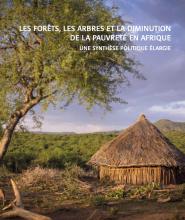Land Library Search
Through our robust search engine, you can search for any item of the over 73,000 highly curated resources in the Land Library.
If you would like to find an overview of what is possible, feel free to peruse the Search Guide.
/ library resources
Showing items 1 through 9 of 76.The Orinoquia region in Colombia is home to diverse ecosystems, including forests and various agroecological zones, but extensive cattle ranching poses a significant challenge as it contributes to deforestation and threatens the region's valuable forest resources.
Sustainable land-use systems (SLUS), such as agroforestry with cocoa, implemented with organic fertiliser, with prescribed post-harvest practices and rainwater irrigation, can potentially increase farm productivity, while reducing pressure on natural resources by decreasing deforestation and prov
Sub-Saharan Africa is increasingly viewed as an important area for oil palm cultivation and expansion.
Mangrove forests are one of the most impactful carbon-trapping ecosystems, they are effective at locking away vast amounts of "blue carbon" and the IPCC (IPCC, 2022) report encourages the protection of coastal vegetative ecosystems as part of integrated coastal resource management.
This study focuses on the valuation of ecosystem services in Kenya and Vietnam, two countries that have received much attention from the international development community for their biodiversity significance, opportunities for scaling, climate and poverty challenges, and political will.
The potential for profitable groundwater irrigated area development in Nigeria is 5.04 million hectares (ha), almost all of it located in the country’s central and northern states.
Under the new EU deforestation regulation (EUDR), dated 31/05/2023, coffee producers and other producers of other significant commodities —cocoa, oil palm, rubber, soya, cattle, and wood— will have to comply with three aspects to export their products into the European Un ion.
This powerpoint presentation explains why and how to use the Solutions Journalism approach for reporting on key land-related challenges and solutions, including pollution, climate change, deforestation, water scarcity, waste disposal etc.



